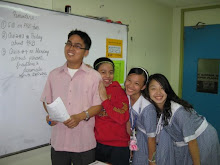
Early Life
Ramon Magsaysay was born in Iba, Zambales on August 31, 1907 to Exequiel Magsaysay, a blacksmith, and Perfecta del Fierro, a schoolteacher. He entered the University of the Philippines in 1927. He worked as a chauffeur to support himself as he studied engineering; later, he transferred to the Institute of Commerce at Jose Rizal College (1928-1932), where he received a baccalaureate in commerce. He then worked as automobile mechanic and shop superintendent. When World War II broke out, he joined the motor pool of the 31st Infantry Division of the Philippine army. When Bataan surrendered in 1942, Magsaysay escaped to the hills, organized the Western Luzon Guerrilla Forces, and was commissioned captain on April 5, 1942. For three years Capt. Magsaysay operated under Col. Merrill's famed guerrilla outfit and saw action at Sawang, San Marcelino, Zambales. Magsaysay was among those instrumental in clearing the Zambales coast of the Japanese prior to the landing of American forces together with the Philippine Commonwealth troops on January 29, 1945.
Political Life
On April 23, 1946, Magsaysay was elected as an Independent to the Philippine House of Representatives. In 1948, President Roxas chose Magsaysay to go to Washington as Chairman of the Committee on Guerrilla Affairs, to help to secure passage of the Rogers Bill, giving considerable benefits to Philippine veterans. In the so-called "dirty election" of 1949, he was re-elected to a second term in the House of Representatives. During both terms he was Chairman of the House National Defense Committee.
In early August 1950 he offered President Quirino a plan to fight the Communist guerillas, using his own experiences in guerrilla warfare during World War II. After some hesitation, Quirino realized that there was no alternative and appointed Magsaysay Secretary of National Defence on August 31, 1950. He intensified the campaign against the Hukbalahap guerillas. This success was due in part to the unconventional methods he employed and developed alongside an American adviser, General Edward Lansdale. The counterinsurgency the two deployed utilized soldiers distributing relief goods and other forms of aid to outlying, provincial communities. Where before Magsaysay, the rural folk looked on the Philippine Army if not in distrust, at least with general apathy, during his term as Defense Secretary Filipinos began to respect and admire their soldiers. In June 1952 Magsaysay made a goodwill tour to the United States and Mexico. He visited New York, Washington, D.C. (with a medical check-up at Walter Reed Hospital) and Mexico City where he spoke at the Annual Convention of Lions International. By 1953 President Quirino thought the threat of the Huks was under control and Secretary Magsaysay was becoming too powerful. Magsaysay met with interference and obstruction from the President and his advisers, in fear they might be unseated at the next presidential election. Although Magsaysay had at that time no intention to run, he was urged from many sides and finally was convinced that the only way to continue his fight against communism, and for a government for the people, was to be elected President, ousting the corrupt administration that, in his opinion, had caused the rise of the communist guerrillas by bad administration. He resigned his post as defense secretary on February 28, 1953, and became the presidential candidate of the Nacionalista Party, disputing the nomination with senator Camilo Osías at the Nacionalista national convention.Presidential Election/PresidencyPresidential elections were held on November 10, 1953 in the Philippines. Incumbent President Elpidio Quirino lost his opportunity to get a second full term as President of the Philippines to former Defense Secretary Ramon Magsaysay. His running mate, Senator Jose Yulo lost to Senator Carlos P. Garcia. Vice President Fernando Lopez did not run for re-election. This was the first time that an elected president did not come from the Senate.In the Election of 1953, Magsaysay was decisively elected president over the incumbent Elpidio Quirino. He was sworn into office wearing the Barong Tagalog, a first by a Philippine president. As president, he was a close friend and supporter of the United States and a vocal spokesman against communism during the Cold War. He led the foundation of the Southeast Asia Treaty Organization also known as the Manila Pact of 1954, that aimed to defeat communist-Marxist movements in South East Asia, South Asia and the Southwestern Pacific. During his term, he made Malacañáng Palace literally a "house of the people", opening its gates to the public. One example of his integrity followed a demonstration flight aboard a new plane belonging to the Philippines Air Force (PAF). President Magsaysay asked what the operating costs per hour were for that type of aircraft, then wrote a personal check to the PAF, covering the cost of his flight. (FROM WIKIPEDIA)



No comments:
Post a Comment